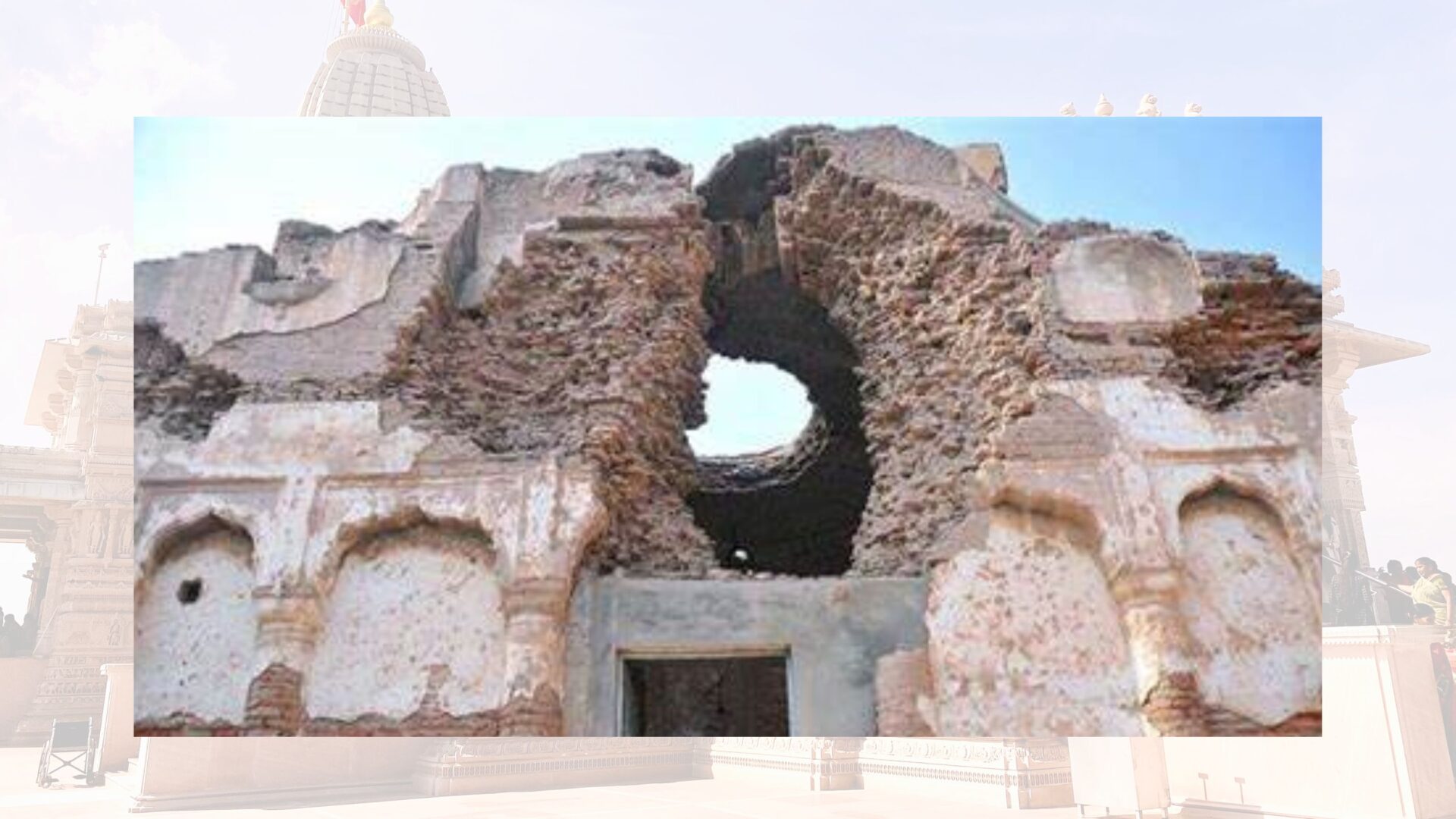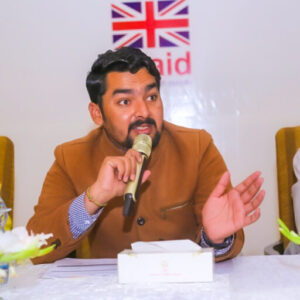
Temples are bridges between time and the timeless, where stone remembers what history forgets.

Lala Chaman Lal
I am a passionate human rights advocate working to protect and empower marginalized communities.
“Temples are bridges between time and the timeless — where stone remembers what history forgets.”
Multan, a city known for its history and culture, is a land that has witnessed centuries of faith and conquest. From the blueprints of Hindu Saints to the rise of Islamic Culture, the city has welcomed a significant part of spiritual memory. Among the Many sacred events and sites there was “The Prahladpuri Temple”. The temple has been of great value not just for its structure or location but for its profound emotional and mythological significance.
As per the Hindu Tradition, the Prahladpuri Temple marks the place where ‘Bhagat Prahlad’ worshipped ‘Lord Vishnu’ against his father’s will. According to the Hindu Mythology, the Father, Hiranyakashipu, was an evil king who wanted everyone to worship Him as the one true God. However, His very own son refused to bow down to this cruelty and worshipped Lord Vishnu, the True Divine power. Hiranyakashipu feeling betrayed from his own son, tried killing him multiple times but Prahlad, protected by the divine power always remained unharmed.
In one of the well-known events, the tyrannical king recruited his sister Holika, who had been blessed with the promise that fire wouldn’t harm her. The plan was to have Holika sit in a burning pyre with Prahlad on her lap, hoping the flames would consume him. However, due to the misuse of her boon, the fire spared Prahlad and burnt Holika instead.
Later, in a dramatic turn that echoed through mythology, Lord Vishnu appeared in his fierce Narasimha form (The NARSINGHA Avatar) — half man, half lion — to put an end to Hiranyakashipu’s tyranny.
The ego that declared itself God was torn apart, not by hatred, but by divine justice.
This victory of good over evil is celebrated through Holika Dahan, a symbolic born-fire in the evening followed by the festival of Colors with the sunrise celebrating Love, revival and the divine protection of righteousness.
The temple has believed to be originally built by Prahlad himself nearly 5000 years ago. Located within the city of Multan, this divine place was reconstructed by Hindus during the Sikh Rule. The temple has not merely been a structure but a powerful spiritual connection for the Hindu community, especially during Holi. Its Location beside the Sun Temple and within the Fort of Multan indicates how different faiths coexisted.
Aside the spiritual and cultural significance, the Prahladpuri Temple wasn’t spared of riots and faced multiple destructions. After the demolition of Babri Masjid in 1992 in India, the angry mobs in Pakistan destroyed the place which once stood as a monument of devotion and coexistence.
Centuries of spiritual sanctity were reduced to dust in just mere moments.
Today, the ruins lie quietly inside the boundaries of Multan Fort. While on paper, it comes under the Evacuee Trust Property Board, in reality, no major effort has been made to restore or protect it. What once echoed with chants and prayers is now surrounded by broken walls, squatter settlements, and heaps of garbage, almost as if the neglect is intentional.
Local Hindus say they are not allowed to visit freely. Most of the time, they are denied access, or made to beg for permission. Some even fear asking, worried that they’ll get into trouble or face unwanted attention. Over the years, the temple has become a place people avoid — not approach. It’s no longer a site where people come to worship, it’s a reminder of loss, a place where silence replaced faith.
The ruins of Prahladpuri Temple stand as a silent testament to faith’s enduring light — a light that survived fire, tyranny, and time itself. For centuries, this sacred ground echoed with prayers celebrating Prahlad’s courage and Holi’s triumph of good over evil. It witnessed Hindus, Sikhs, and Muslims sharing a city, their lives woven into Multan’s spiritual tapestry. Today, though its walls are broken and its gates silenced by neglect, the temple’s story refuses to fade. It calls to us not as a relic of the past, but as a bridge to a kinder future.
This temple carries meaning deeper than stone:
It is our shared heritage, proof that different faiths once stood side by side in peace. Restoring it would honor that memory. The Government must ensure the restoration process and necessary provisions shall be made to secure the area and make it accessible for the Hindu community.
It could also become a path for pilgrims, but today’s visa rules make this hard. While Pakistan offers religious tourism visas, the process is complex and Holi access isn’t guaranteed. India and Pakistan must expand their Kartarpur success to Hindu pilgrims: Creating a special Prahladpuri pilgrimage category would let families celebrate Holi safely where their faith was born, reuniting where prayers once rose. Political conflicts — like the aftermath of Pulwama or the 2025 Kashmir incident — must not become reasons to sever spiritual ties or disrupt the sacred rhythm of interfaith connection.
Not just for pilgrims, this place can be a treasure for local and national tourism too. It holds a story bigger than just one community, it’s about standing up for truth even when the odds are against you. If preserved well, the site can inspire school trips, spiritual walks, and family visits. People from across Pakistan, regardless of religion, can come and learn how righteousness won, how divine help arrives when faith stays strong. With some care and support, it can become a place not just of the past, but of the future — where young minds learn about courage, belief, and how good can still win over evil.
- “In February 2021, the Supreme Court appointed Dr. Shoaib Suddle to review the status of the Prahladpuri He reported poor conditions and directed restoration and security measures to be in place before Holi.” https://en.wikipedia.org/wiki/Prahladpuri_Temple
- “A peace committee in Multan—including Ulema, civil society, and local administration— expressed full support for the temple’s restoration, seeing it as a powerful symbol of religious coexistence.” https://tribune.com.pk/story/2284328/historic-prahladpuri-temple-to-be-restored
- “Chief Justice Gulzar Ahmed, while inaugurating a rebuilt Hindu temple in Khyber Pakhtunkhwa, affirmed that no one has the right to harm any place of worship, stressing equal constitutional rights for minorities.” https://english.aaj.tv/news/30270933/
On a larger level, it can also send a message across borders. Prahladpuri can become a symbol of peace, showing the world how faith doesn’t have to divide, it can connect. Restoring and opening it could help build softer ties with countries like India and Nepal, where this story holds deep value. It won’t fix everything overnight, but gestures like these — of respect, of inclusion — go a long way. Let this space be one where not just Hindus, but people from all walks of life feel welcome. That’s how interfaith harmony grows — when shared spaces speak of shared respect.
“Prahladpuri is more than broken stone — it is living memory. A place where faith stood firm against fear, where history remembers courage. Restoring it isn’t just about rebuilding a site, it’s about rekindling a shared flame. Let us not leave it to fade in silence. Let us restore it, preserve it, and allow it to speak again — to this generation and the next. Let Multan once again echo with prayers, not just from one community, but from humanity.”

